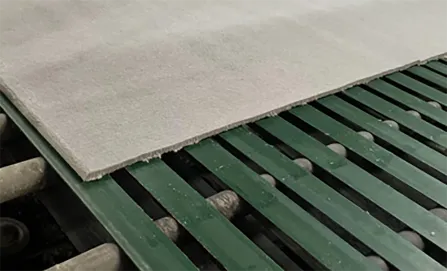Nov . 20, 2024 19:53 Back to list
mineral and fiber board
Understanding Mineral and Fiber Boards A Sustainable Alternative in Construction
In recent years, the construction industry has witnessed a growing interest in sustainable and eco-friendly building materials. Among these, mineral and fiber boards have emerged as innovative solutions that offer numerous benefits in terms of performance, durability, and environmental impact. This article delves into the characteristics, applications, and advantages of mineral and fiber boards, highlighting their role in promoting sustainable construction practices.
What are Mineral and Fiber Boards?
Mineral boards, often referred to as mineral fiber boards, are composite materials made primarily from inorganic minerals such as gypsum, calcium silicate, and other aggregates. Fiber boards, on the other hand, are derived from natural or synthetic fibers, including wood, cellulose, or glass fibers, combined with binding agents. The integration of these materials results in boards that provide excellent thermal insulation, fire resistance, and sound absorption qualities.
Key Characteristics
1. Fire Resistance One of the standout features of mineral boards is their ability to withstand high temperatures. Unlike traditional wood-based materials, mineral boards are non-combustible, making them an ideal choice for fire-prone areas. This property not only enhances building safety but also helps meet stringent fire regulations in many regions.
2. Thermal and Sound Insulation Both mineral and fiber boards offer effective thermal insulation, helping to maintain comfortable indoor temperatures while reducing energy consumption for heating and cooling. Additionally, their sound-absorbing qualities ensure a quieter indoor environment, making them suitable for residential, commercial, and industrial applications.
3. Moisture Resistance Mineral and fiber boards are less susceptible to moisture damage compared to traditional wood products. This resistance reduces the risk of mold and mildew growth, contributing to healthier indoor air quality. Properly treated boards can be used in high-humidity environments, such as kitchens and bathrooms.
4. Sustainability Many mineral and fiber boards are made from recycled materials or sustainable sources, aligning with global efforts to reduce waste and promote environmentally friendly practices. By opting for these materials, builders can reduce their overall carbon footprint and contribute to a more sustainable future.
Applications
mineral and fiber board

Mineral and fiber boards have a wide range of applications in construction and interior design
. Some of the most common uses include- Wall and Ceiling Linings These boards can be used as interior wall and ceiling linings, providing both aesthetic appeal and functional benefits. They can be easily painted or finished to suit various design preferences.
- Insulation Due to their excellent thermal properties, mineral and fiber boards are often used as insulation materials in roofs, walls, and floors. This enhances energy efficiency in buildings.
- Partition Walls Their lightweight nature and ease of installation make mineral and fiber boards ideal for creating partition walls in offices and commercial spaces, allowing for versatile space management.
- Acoustic Panels In settings where sound control is crucial, such as theaters, recording studios, and conference rooms, these boards serve as effective acoustic panels, reducing noise and enhancing sound quality.
Advantages Over Traditional Materials
Compared to traditional materials like plywood or particleboard, mineral and fiber boards offer several distinct advantages. They are typically more durable, have longer lifespans, and require less maintenance. Moreover, their fire and moisture resistance properties can lead to lower insurance costs and greater peace of mind for homeowners and building managers.
Conclusion
As the construction industry pivots towards more sustainable practices, the role of innovative materials like mineral and fiber boards cannot be underestimated. These materials not only meet the functional requirements of modern buildings but also contribute to environmental sustainability. By choosing mineral and fiber boards, construction professionals and homeowners alike can participate in the movement toward greener building solutions, ensuring a healthier planet for future generations. As research and technology continue to advance, it is expected that these materials will become even more widely adopted, paving the way for a more sustainable and resilient built environment.
-
Quality Ceiling Trap Doors & Access Panels | Easy & Secure AccessNewsAug.30,2025
-
Durable Ceiling T Grid Systems | Easy InstallationNewsAug.29,2025
-
PVC Gypsum Ceiling: Durable, Laminated Tiles for Modern SpacesNewsAug.28,2025
-
Pvc Gypsum Ceiling Is DurableNewsAug.21,2025
-
Mineral Fiber Board Is DurableNewsAug.21,2025
-
Ceiling Tile Clip Reusable DesignNewsAug.21,2025







